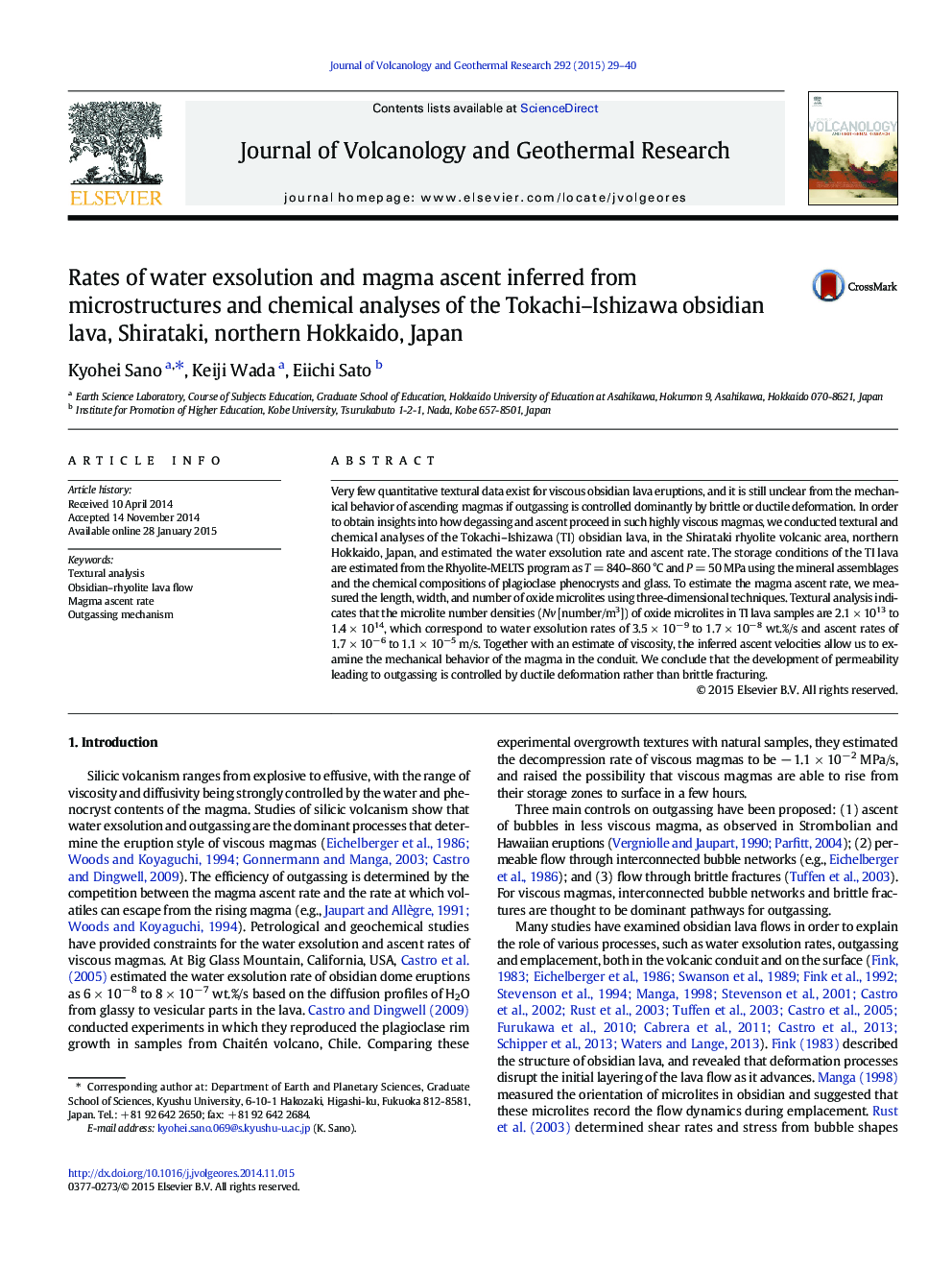| Article ID | Journal | Published Year | Pages | File Type |
|---|---|---|---|---|
| 4712909 | Journal of Volcanology and Geothermal Research | 2015 | 12 Pages |
•We investigated the Tokachi–Ishizawa obsidian lava from Shirataki, Hokkaido, Japan.•We performed chemical and textural analyses of obsidian lava samples.•The water exsolution rate and ascent rate are estimated from textural analysis.•Permeability development is related to ductile process rather than brittle fracturing.
Very few quantitative textural data exist for viscous obsidian lava eruptions, and it is still unclear from the mechanical behavior of ascending magmas if outgassing is controlled dominantly by brittle or ductile deformation. In order to obtain insights into how degassing and ascent proceed in such highly viscous magmas, we conducted textural and chemical analyses of the Tokachi–Ishizawa (TI) obsidian lava, in the Shirataki rhyolite volcanic area, northern Hokkaido, Japan, and estimated the water exsolution rate and ascent rate. The storage conditions of the TI lava are estimated from the Rhyolite-MELTS program as T = 840–860 °C and P = 50 MPa using the mineral assemblages and the chemical compositions of plagioclase phenocrysts and glass. To estimate the magma ascent rate, we measured the length, width, and number of oxide microlites using three-dimensional techniques. Textural analysis indicates that the microlite number densities (Nv [number/m3]) of oxide microlites in TI lava samples are 2.1 × 1013 to 1.4 × 1014, which correspond to water exsolution rates of 3.5 × 10− 9 to 1.7 × 10− 8 wt.%/s and ascent rates of 1.7 × 10− 6 to 1.1 × 10− 5 m/s. Together with an estimate of viscosity, the inferred ascent velocities allow us to examine the mechanical behavior of the magma in the conduit. We conclude that the development of permeability leading to outgassing is controlled by ductile deformation rather than brittle fracturing.
